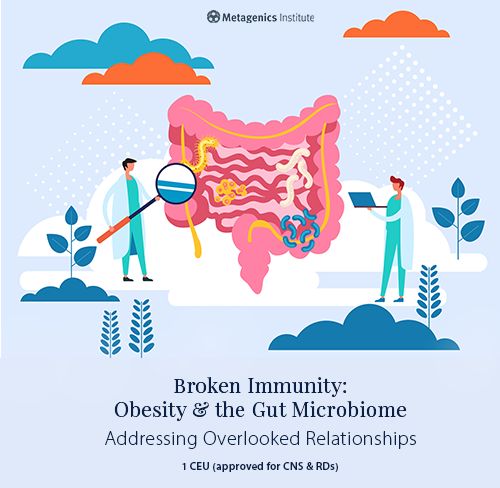
by Vincent Pedre, MD
Small intestinal bacterial overgrowth (SIBO) is a controversial diagnosis that can masquerade behind a variety of symptoms, not all of which involve the characteristic bloating, gas and abdominal pain. SIBO also manifests as rosacea,1 diarrhea, constipation, anxiety,2 depression, fatigue, and iron deficiency. The astute clinician needs to hold a high degree of suspicion because a patient with SIBO may not present with the classic symptoms. For example, a recent severe case I saw presented only with diarrhea.
Definitions
First of all, a few definitions are in order. SIBO is a chronic, excessive bacterial colonization of the small bowel. This means the patient with SIBO may have an overgrowth of the commensal microbiota in the small intestine, normally averaging between 103—104 CFUs (colony-forming units)/mL, or backwards migration through the ileocecal valve into the small intestine of the normal bacterial flora from the large intestine, where the average is 1012-13 CFUs/mL.3 Once established, the organisms produce hydrogen or methane gas or a combination of the two in excess and consume vital nutrients before the person has a chance to absorb them, leading to malnutrition and fatigue. Hydrogen is produced by bacteria, but methane is produced by another group of organisms known as “archaea,” which fall under a different kingdom. This becomes relevant when considering treatment. The typical complaint is bloating after meals, with the timing thereof ranging from minutes to an hour later depending on the location of the SIBO.
Factors that put someone at risk for SIBO include:3
- Hypochlorhydria (low production of hydrochloric acid in the digestive track)
- Chronic antacid therapy (especially with PPIs or H2-blockers)
- Gastroparesis (secondary to diabetes type I or II); motility of the stomach is abnormal or absent
- Gallbladder/bile dysfunction
- Pancreatic enzyme deficiency
- Slow-transit constipation
- Disruption of the migrating motor complex (MMC), as may be caused by radiation
- History of bulimia
- Multiple courses of antibiotics
- Ileocecal valve incompetence
- Diet rich in sugars and simple carbohydrates
- Heavy alcohol use
Testing3
Testing for SIBO is done either via a jejunal aspirate, which is the gold standard, or most often through a less invasive breath test that detects both methane (CH4) and hydrogen sulfide (H2S) gases, using one of two sugars (glucose or lactulose) to induce the gas production. Since CH4 and H2S are not produced as metabolic byproducts of human cells, the expired gas during a three-hour breath test is generated by bacterial fermentation as the provoking solution travels through the gut. It takes about 120 minutes to reach the end of the ileum and another hour to complete transit through the colon. Taking into account a patient’s clinical picture is important in order to interpret the results of the testing. Based on a spike in hydrogen and/or methane gas as described below, a positive test is confirmed within the 120-minute mark.
SIBO breath testing is considered positive when:
- H2S production rises by 20 parts per million (ppm) or greater over the lowest preceding value within 120 minutes after ingesting the solution
- Methane production rises by 12ppm or greater over the lowest preceding value within 120 minutes after the testing solution
- A combined sum of H2S and CH4 production rises 15ppm or greater above the lowest preceding value within 120 minutes
Rifaximin arrived as the perfect solution to treating SIBO. The controversy with typical antibiotics is that they would be absorbed before they reached their target in the small bowel, especially for distal SIBO.4 Rifaximin, unlike other antibiotics, is not absorbed; staying in the intraluminal space where the antibiotic is needed to reduce the bacterial overgrowth back to normal. Unfortunately, because of its apparent resistance to conventional treatment, SIBO is a source of great frustration for patients and clinicians alike. SIBO often recurs in the same patient within several months of treatment. It will usually respond to repeat treatment with rifaximin; however, we know that this remedy is only at most 40-80 percent effective in IBS without constipation.5-6
Frequency of SIBO among those suffering from IBS, is between 4-78%7particularly the diarrhea-predominant type. However, methane-predominant SIBO, which is often characterized by constipation, does not respond well to rifaximin therapy alone. In these cases, neomycin is often added to rifaximin,8 but it has a high risk of ototoxicity, making it a less desirable adjunct to treatment. Therefore, what remain are natural, herbal antimicrobials that can be quite effective without the risks of toxicity. The difference is that this treatment must be of longer duration to resolve SIBO.
My Recommendations for Therapy
The herbal remedies that I have found to be effective, either in combination with themselves or post-antibiotic therapy include ingredients like peppermint oil, berberine, and oregano oil.
For symptom relief:
- A combination of peppermint oil with calming lavender oil and chamomile extract
To address bacterial overgrowth (very likely accompanied with yeast overgrowth) the following may be taken together, or in an alternating two week cycle:
- A blend of concentrated aromatic essential oils, including thyme and oregano, that help support intestinal microbial balance
- A concentrated berberine formula makes a great adjunct to SIBO treatment, including after rifaximin therapy for 2—3 months to prevent a recurrence
For improving the digestion and absorption of nutrients:
- An extra-strength, pancreatic-derived enzyme complex with protease, lipase and amylase
For promoting a healthy gastric environment:
- A zinc-carnosine complex, which helps improve gastric mucosal integrity and function
The key to successful SIBO treatment is to understand that remedies work best in combination, and the patient must also follow a SIBO-specific diet until you are sure that the SIBO is totally resolved. I usually wait until after the first month of therapy before adding a probiotic, because early on a probiotic can aggravate SIBO symptoms of gas and bloating. The best protocol for adding probiotics post-SIBO treatment is to “start low and go slow”, making sure the patient is tolerating the probiotic without worsening symptoms. A good probiotic to start with has a lower concentration of live organisms per capsule, for example 4 billion live organisms per capsule, so the dose can be titrated as tolerated.
A repeat SIBO breath test is useful in gauging progress post-treatment, and helps guide the duration and intensity of therapy. SIBO patients require close monitoring, so I recommend meeting with them twice in the first month of therapy, then monthly for another 2 – 5 months to ensure complete resolution.
There are no magic bullets for the treatment of SIBO. Each individual patient has unique needs; therefore, a combination of treatments and ongoing monitoring is recommended for SIBO.
References
- Parodi A, Paolino S, Gerco A, et al. Small intestinal bacterial overgrowth in rosacea: clinical effectiveness of its eradication. Clinical Gastroenterology Hepatology. 2008;6(7):759-764.
- Addolorato G, Mirijello A, D’Angelo C, et al. State and trait anxiety and depression in patients affected by gastrointestinal diseases: psychometric evaluation of 1641 patients referred to an internal medicine outpatient setting. Int J Clin Pract. 2008;62(7):1063-1069.
- Dukowicz AC, Lacy BE, Levine GM. Small intestinal bacterial overgrowth: a comprehensive review. Gastroenterol Hepatol. 2007;3(2):112-122.
- Di Stefano M, Malservisi S, Veneto G, Ferrieri A, Corazza GR. Rifaximin versus chlortetracycline in the short-term treatment of small intestinal bacterial overgrowth. Aliment Pharmacol Ther. 2000;14(5):551-556.
- Pimental M, Lembo A, Chey WD, et al. Rifaximin therapy for patients with irritable bowel syndrome without constipation. N Engl J Med. 2011;364(1):22-32.
- Scarpellini E, Gabrielli M, Lauritano CE, et al. High dosage rifaximin for the treatment of small intestinal bacterial overgrowth. Alimentary Pharm. and Ther. 2007;25(7):781-786.
- Ghoshal UC, Shukla R, Ghoshal J. Small intestinal bacterial overgrowth and irritable bowel syndrome: a bridge between functional organic dichotomy. Gut liver. 2017;11(2):196-208.
- Low K, Hwang L, Hua J, Zhu A, Morales W, Pimentel M. A combination of rifaximin and neomycin is most effective in treating irritable bowel syndrome patients with methane on lactulose breath test. J Clin Gastroenterol. 2010;44(8):547-550.
Vincent Pedre, MD
Dr. Vincent M. Pedre is Medical Director of Pedre Integrative Health and President of Dr. Pedre Wellness. He is a board-certified internist and Functional Medicine certified practitioner in private practice in New York City. His philosophy and clinical practices blend Western and Eastern medical traditions, defined by an integrative, functional, and systems-based approach to well-being. Dr. Pedre is a Clinical Instructor at the Mount Sinai School of Medicine, as well as certified in yoga and Medical Acupuncture.







